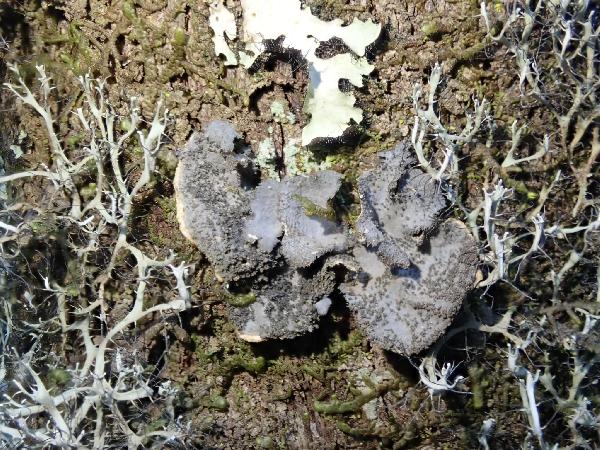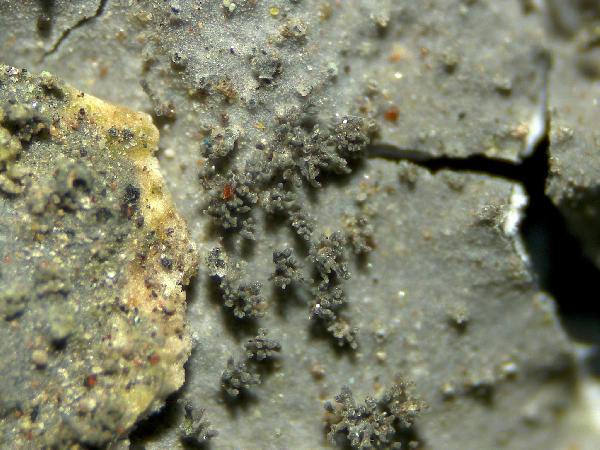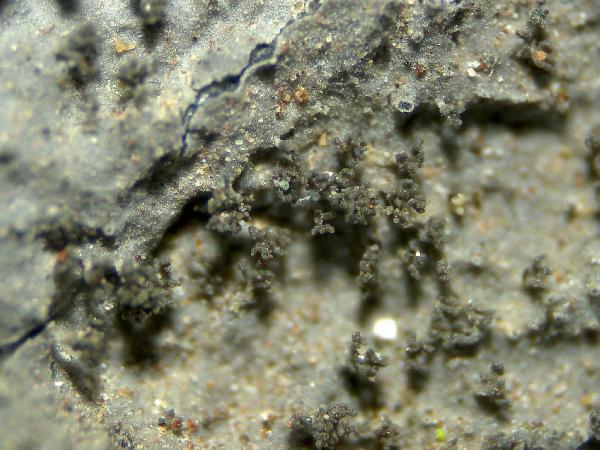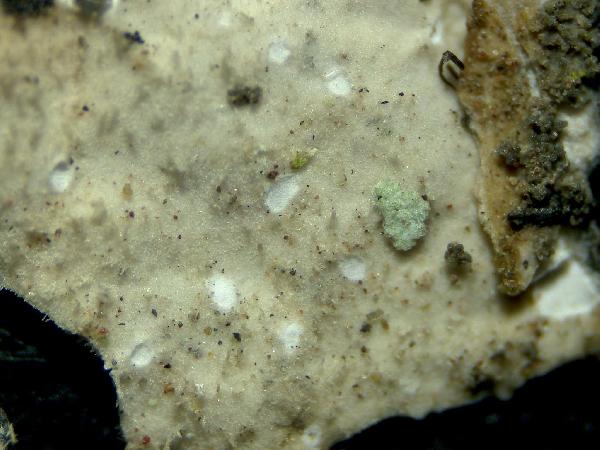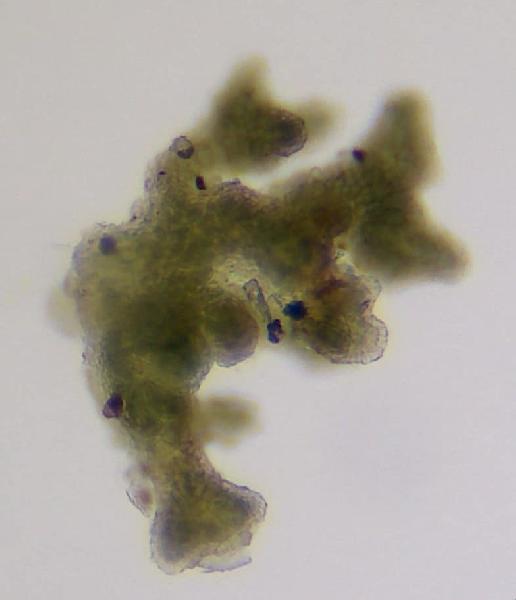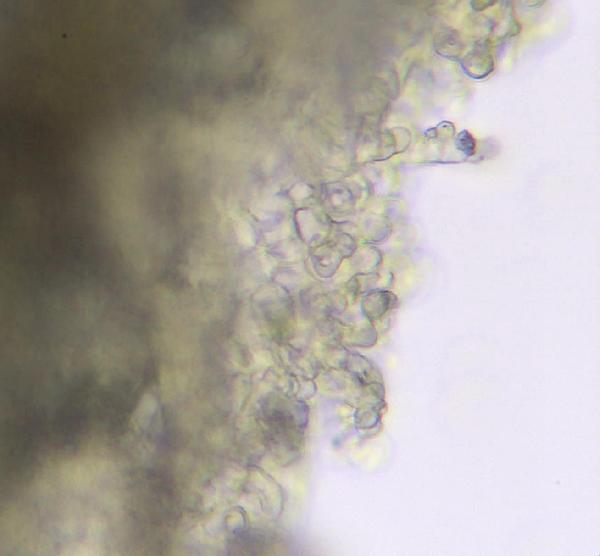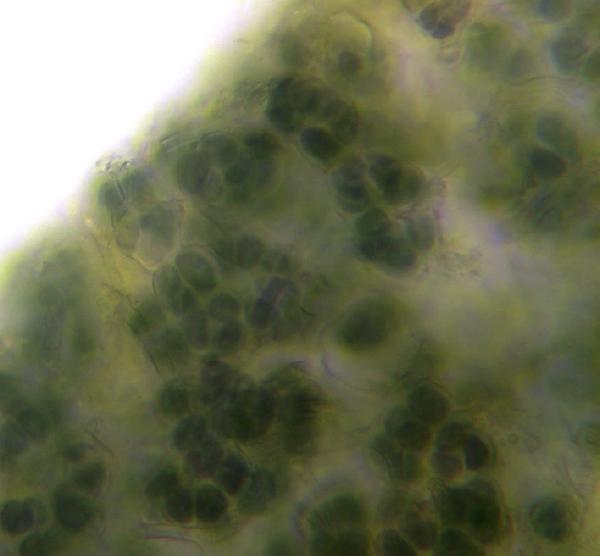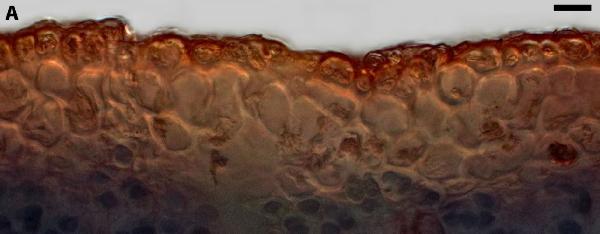Sticta fuliginoides Magain & Sérus.
Mycol. Progr., 14, 97: 20, 2015
Synonyms:
Distribution:
Description: Thallus foliose, heteromerous, dorsiventral, isidiate, at first appearing as a single, vase- or trumpet-shaped lobe with revolute margins, borne on an up to 1 cm long, robust stipe and thus looking like a young mushroom, later developing several flabellate, irregular or mostly suborbicular, 2-3(-5) cm wide lobes. Lobes simple or 1-2 branched, adnate to ascending, especially when young, imbricate and overlapping, flat to slightly involute, with rounded, obtuse or even truncate (especially in old thalli) ends. Upper surface smooth to weakly scrobiculate (especially in old lobes), dark brown or rarely pale grey, dull or slightly glossy. Isidia abundant, laminal, at first simple and globose or with a flattened top, later forming erect coralloid masses, < 0.2 mm high, sometimes forming substipitate lobules on old thalli, concolorous with thallus or darker. Lower surface smooth or scrobiculate, pale orange to brownish, darker towards the center in old thalli, sparsely to densely tomentose, with usually abundant, 0.4-0.6(-1.5) mm wide, round or angular, urceolate, erumpent to prominent, white cyphellae whose membrane is made of a layer of rounded cells (5-9 μm in diam.) with outer side (that in contact with the air) covered with minute, 4-6(-8) papillae measuring 1–2.5 x 1-1.5 μm, which tend to disappear in old thalli. Upper cortex paraplectenchymatous, 25-40 μm thick, usually 2-layered, the upper layer made of a single row, the other of 3-5 rows of cells; medulla white, lax, 40-60 µm thick; lower cortex paraplectenchymatous, 30-40 μm thick, made of 3–5 rows of isodiametrical cells; primary tomentum agglutinated in fascicles; secondary tomentum always present (high magnification!), made of free, unbranched < 20 μm long, moniliform hyphae, with budding apices producing individual rounded cells that act as diaspores. Apothecia and pycnidia unknown. Photobiont cyanobacterial ( Nostoc, the cells in compact masses). Spot tests: cortex and medulla K-, C-, KC-, P-, UV-. Chemistry: without lichen substances.
Note: a recently-described, western, Macaronesian-atlantic species found on mossy trees and rocks within forests or at their edges, incl. parkland conditions in areas with an oceanic climate. It was never reported from Italy, but its presence in particularly humid sites cannot be excluded.
Growth form: Foliose, broad lobed
Substrata: bark and rocks
Photobiont: cyanobacteria, filamentous (e.g. Nostoc, Scytonema)
Reproductive strategy: mainly asexual, by isidia, or isidia-like structures (e.g. schizidia)
Restricted to humid-warm, oceanic areas

Predictive model

Image uploaded by Paul Cannon - CC BY-SA NC - Source: https://fungi.myspecies.info/all-fungi/sticta-fuliginoides
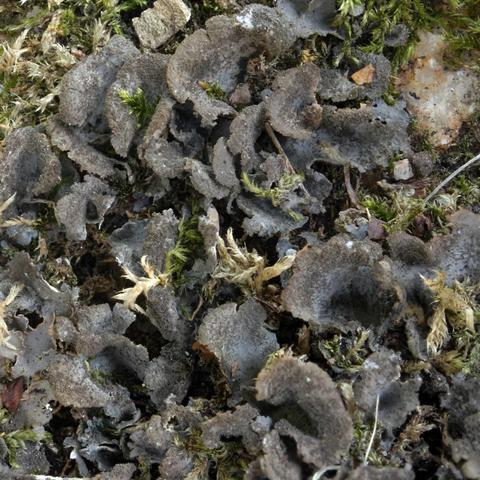
Image uploaded by Paul Cannon - CC BY-SA NC - Source: https://fungi.myspecies.info/all-fungi/sticta-fuliginoides

Source: Ekman, S., Tønsberg, T. & Jørgensen, P. M. 2019. The Sticta fuliginosa group in Norway and Sweden.Graphis Scripta 31 (4): 23–33. Oslo. ISSN 2002-4495. - CC BY-4.0
Sections through cyphellae in Sticta. A–E. S. fuliginoides, showing section through entire cyphella(A) and cyphella surface cells with papillae (B–E). Scales: 0.1 mm (A), 10 μm (B–E). Photos of UPS L-112257 (A), L- 157135 (B), L-002176 (C–E)
Growth form: Foliose, broad lobed
Substrata: bark and rocks
Photobiont: cyanobacteria, filamentous (e.g. Nostoc, Scytonema)
Reproductive strategy: mainly asexual, by isidia, or isidia-like structures (e.g. schizidia)
Restricted to humid-warm, oceanic areas

Predictive model

Image uploaded by Paul Cannon - CC BY-SA NC - Source: https://fungi.myspecies.info/all-fungi/sticta-fuliginoides

Image uploaded by Paul Cannon - CC BY-SA NC - Source: https://fungi.myspecies.info/all-fungi/sticta-fuliginoides

 INDEX FUNGORUM
INDEX FUNGORUM
 GBIF
GBIF
